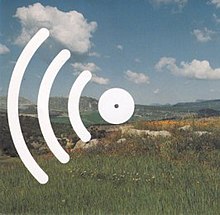D. I. Go Pop
| D. I. Go Pop | ||||
|---|---|---|---|---|
 |
||||
| Studio album by Disco Inferno | ||||
| Released | 28 February 1994 | |||
| Recorded | 1993, United Kingdom | |||
| Genre | ||||
| Length | 33:26 | |||
| Label | Rough Trade | |||
| Producer | Charlie McIntosh | |||
| Disco Inferno chronology | ||||
|
||||
| Professional ratings | |
|---|---|
| Review scores | |
| Source | Rating |
| Allmusic | |
| Pitchfork Media | (9.3/10) |
| PopMatters | (very favourable) |
| The Quietus | (very favourable) |
| Tiny Mix Tapes | (very favourable) |
| Westnet | (8/10) |
D. I. Go Pop is the second studio album by English post-rock band Disco Inferno. After forming as a post-punk band in 1989, the band subsequently worked towards an innovative production approach which made extensive use of digital samplers. The band released several critically acclaimed EPs in this vein from 1992–93, and recorded D. I. Go Pop concurrently with some of those preceding EPs, working with producer Charlie McIntosh. The album cover, designed by Fuel and featuring photography David Spero, has been described as "one of the most indelible album cover images in the '90s."
The album was released in February 1994 on Rough Trade Records in the United Kingdom and Bar/None Records in the United States. It did not chart and was mostly overlooked on release, bar some positive reviews. However, it has since gone on to be considered an innovative and influential album and a key release in the history of post-rock. Numerous bands have cited it as an influence. It has been featured in several lists of the greatest albums of the 1990s and of all time. The album was remastered and re-released by One Little Indian in March 2004, bringing the album renewed attention from both critics and music buyers.
Disco Inferno formed in 1989 in Essex by teenagers Ian Crause (guitars and vocals), Paul Willmott (bass), Daniel Gish (keyboards) and Rob Whatley (drums), although Gish soon quit the band to join Bark Psychosis, leaving Disco Inferno to become a trio. They were initially a post-punk band heavily influenced by bands such as Joy Division and Wire, releasing their first album Open Doors, Closed Windows (1991) alongside the "Entertainment" single, also from 1991, and 1992's Science EP, all of which were compiled onto the compilation In Debt (1992). However, Crause soon became infatuated with the unique sounds of bands My Bloody Valentine and the Young Gods, as well as the Bomb Squad's revolutionary production and sampling on the music of Public Enemy, and with the release of the Summer's Last Sound EP, released later on in 1992 by, the band's musical style changed towards sample-based electronic sounds. The band "hit upon a seemingly simple but ultimately world-opening idea" with the EP: to write their instruments through samplers, and unlike their contemporaries who sampled elements of music, film dialogue or other media, Disco Inferno "engaged with the whole world", using their set up to record sounds ranging from running water, the wind, whistling birds, boots, car crashes and angry voices. Crause had purchased a Roland S-750 sampler with his savings and started programming towards the band's sound for six months. In a 2011 interview, Wilmott recalled of the era:
...
Wikipedia
